Anxiety disorders can make even the smallest parts of life seem impossibly difficult and stressful, and unfortunately, they’re not rare. This umbrella term is characterized by strong feelings of fear, stress, and restlessness and includes everything from generalized anxiety disorders (GAD) and social anxiety disorder to panic disorder, phobias, obsessive-compulsive disorder, and post-traumatic stress disorder (PTSD). Symptoms like panic attacks, distress, and feelings of impending doom or danger can be disruptive in everyday situations, but there is good news: Anxiety disorders can be treated. One of the primary treatment methods is cognitive-behavioral therapy for anxiety, and there is plenty of evidence that this therapeutic approach can make a big difference for many people. Let’s explore how CBT can be a part of the way to overcome anxiety disorders.
Mental Health Treatment That Works
Understanding Cognitive-Behavioral Therapy (CBT)
As the name suggests, cognitive-behavioral therapy, or CBT, is a psychotherapeutic approach to communication techniques between patients and health professionals that aims to identify the key underlying factors behind mental health disorders or social issues. Once those underlying issues are identified, especially cognitive thought processes and their subsequent impacts on behavior and mental health, patients work with professionals to resolve them.
It was first developed by Aaron Beck in the 1960s and has since become a mainstay of treatment for several mental health disorders, including depression and anxiety, as well as eating disorders and substance use disorders. At the heart of CBT is the realization that patients with depression and other conditions often verbalize thought processes and patterns that simply aren’t rational or valid. By focusing on these disruptive thought patterns — and working through them together — professionals and patients can overcome the disordered thoughts and feelings and achieve better mental health and satisfaction.
How CBT Works to Treat Anxiety
Cognitive-behavioral therapy for anxiety has many similarities to the originally developed use of CBT for depression, but there are some unique components to its role in helping people with anxiety disorders. Let’s begin by exploring the cognitive model of anxiety, which is based on the belief that a person’s anxiety stems from a two-part process of assessing potential threats or danger. Anxiety is a natural part of life, but for someone who suffers from an anxiety disorder, people feel like they are threatened by some kind of harm, physical or social, and this perception can be inaccurate and even harmful in and of itself.
This is where cognitive-behavioral therapy for anxiety can be an effective tool. Because patients work with their care providers to identify inaccurate or dysfunctional thoughts and patterns, the problem or problems can become the focus of treatment. Over the course of several sessions, patients will undergo cognitive restructuring to reset and adjust those harmful thought processes, process past emotional situations, and develop more positive cognitive patterns, including relaxation techniques.
Benefits of CBT for Anxiety
There are several benefits of cognitive-behavioral therapy for anxiety — and it’s important to understand that CBT is a first-line treatment methodology to tackle this especially prevalent mental health disorder. So, why is it the gold standard of anxiety treatment? Because it works.
CBT is typically offered on a short-term basis of weekly sessions, often ranging from 5 to 20 appointments, and the results are entirely dependent on how much a patient commits to the process and the beginning severity of their mental health disorder. Often, people will start to notice positive results as early as one month into treatment. As they work with their therapist on actually restructuring their dysfunctional cognitive processes (irrational or unnecessarily harmful anxiety about real or imagined situations and possibilities) in the coming weeks, they often will achieve long-term benefits that can last for years. Occasionally, patients will require “booster” sessions after completing their main course of treatment.
However, the goal is to use cognitive-behavioral therapy for anxiety to empower patients with self-help tools and effective anxiety management strategies to develop a better, more productive way of looking at the world around them — and this has long-term results.
The CBT Process: What to Expect
No matter what it’s being used to treat, some common processes can be expected when starting cognitive-behavioral therapy treatment. Patients can assume they’ll start out with a more casual chat with their care provider as a way of learning what CBT is, how it’s done, and what results can be expected. This initial step also allows therapists to determine the problem to be solved and set patient expectations. Beyond that, it establishes a therapeutic connection between the professional and patient — and this is crucial for CBT to work.
Once those dysfunctional thought patterns are identified and the problem to solve is clearly outlined, therapy sessions will focus on treatment to change these negative and disruptive thoughts into positive, affirming thoughts.
The hardest, but most essential, part of the CBT process is rewiring thought patterns — and this can take some time because it isn’t easy to change human behavior. While cognitive-behavioral therapy is considered relatively low-risk among treatment options for mental health conditions, patients might feel challenged to explore unhealed emotional wounds or relieve emotional or painful episodes. It could be uncomfortable, but it’s worth the time and effort because this is the only way to get to the point of healing in the long term.

Integrating CBT with Other Treatments
While cognitive-behavioral therapy for anxiety is a common starting point for treating this disorder, many people will also be treated with medication simultaneously, most often antidepressants. These medications, or other drugs such as anti-anxiety medications and beta-blockers, can help balance brain chemicals and make therapeutic interventions like CBT even more effective.
In addition to medication and CBT, patients can expect an emphasis on self-care strategies — things like meditation, yoga, relaxation techniques, and getting enough sleep — that will also be beneficial in dealing with the underlying anxiety disorder. Other forms of therapy may also be a part of the treatment plan. For those suffering from post-traumatic stress disorder, for example, eye movement desensitization and reprocessing (EMDR) can be beneficial because it addresses painful experiences and helps people change how their brain interprets these stressful memories and occurrences.
How to Get Started with CBT for Anxiety at Moment of Clarity
If you or a loved one is suffering from an anxiety disorder, you’re not alone. An analysis of National Institute of Mental Health Disorders statistics by Johns Hopkins Medicine found about 26% of American adults suffer from a diagnosable mental disorder each year — including 18% of adults in a given year who have some form of an anxiety disorder. Luckily, help is available.
In California, Moment of Clarity is a proud provider of evidence-based treatments like cognitive-behavioral therapy for anxiety that can help people of all ages and walks of life achieve a better, brighter future. Our outpatient mental health services in Santa Ana are recognized as effective and safe, and we can successfully treat a wide range of mental health conditions, including all types of anxiety disorders. Our specialists are well-versed in the unique needs of patients, including trauma-informed care.
Get started today by contacting our team online or calling us at 949-625-0564. Our specialists can help you or a loved one verify insurance coverage, schedule an assessment, get a proper diagnosis, and start on an individualized treatment plan specifically designed for their unique needs. We’re here to help, and we are ready to help you overcome the burden of anxiety disorder.




